A Fabric Fiasco: AITA for Demanding My SIL Replace the Expensive Fabric She Ruined?
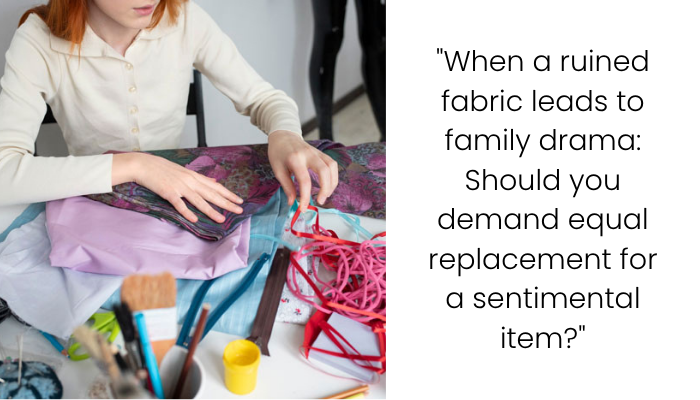
In this AITA post, the user shares a heated situation involving their sister-in-law (SIL) and the destruction of a beloved piece of fabric. The user is a passionate hobbyist who sews their own clothes and has a dedicated craft room filled with fabric, including a rare, discontinued fabric that they had purchased as a special treat for themselves. During a Thanksgiving gathering at their home, the SIL, along with her children, was staying with them. The SIL asked to use a tablecloth for her children to place down while doing Christmas crafts. The user clearly directed her to a linen closet with tablecloths, but upon returning, they found that the SIL had used their precious fabric instead.
To make matters worse, the fabric was ruined with paint stains. After a highly emotional reaction, the user demanded that the SIL replace the fabric with an equal-quality one. However, the SIL responded by offering a much cheaper, inferior fabric from JoAnn Fabrics. The user was insulted and refused to accept the fabric, escalating the situation to the point where the SIL was told to leave the house. The user is now seeking validation on whether their demand for equal fabric replacement is justified, as they’re being criticized by others for their strong response.
Advertisement – Continue Reading Below
There’s nothing more frustrating than when someone destroys something important to you, then tries to tell you it wasn’t a big deal

Advertisement – Continue Reading Below
The author, a passionate home sewer, hosted Thanksgiving and allowed her sister-in-law and her children to stay over
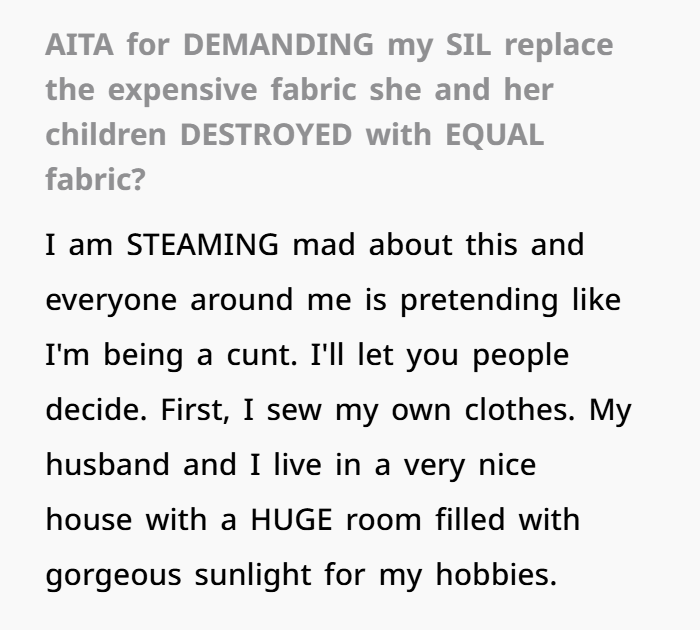
Advertisement – Continue Reading Below
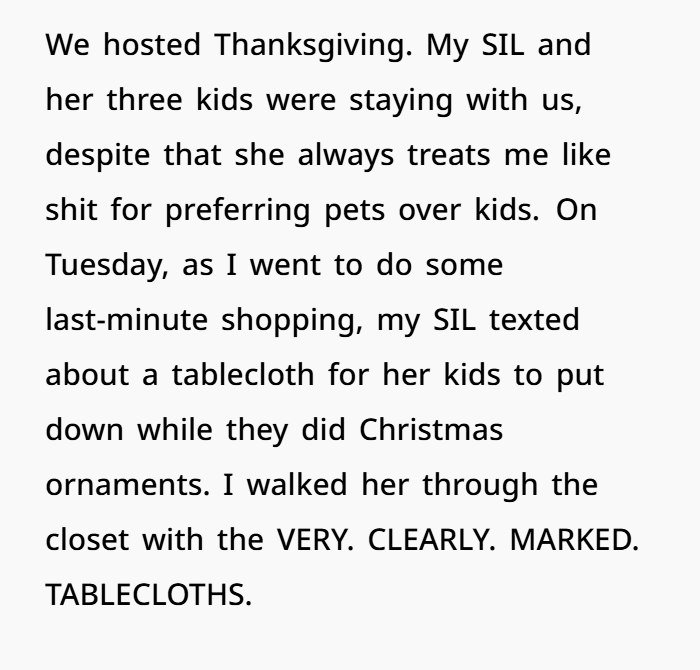
Advertisement – Continue Reading Below

Advertisement – Continue Reading Below
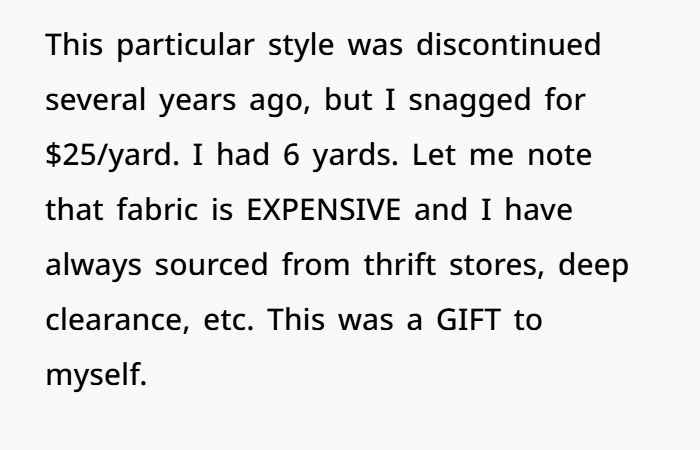
Advertisement – Continue Reading Below
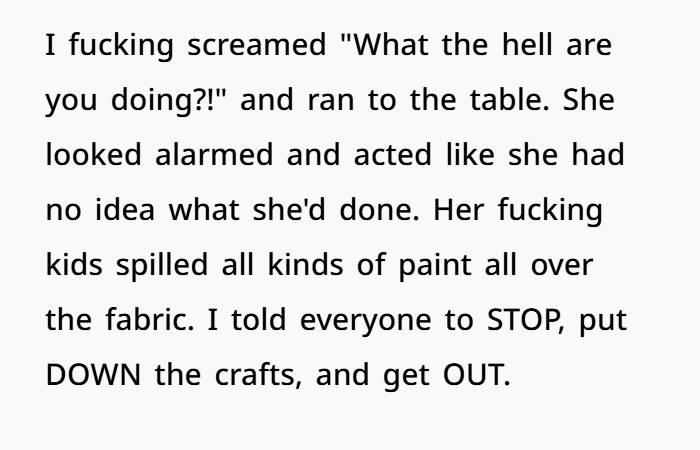
Advertisement – Continue Reading Below
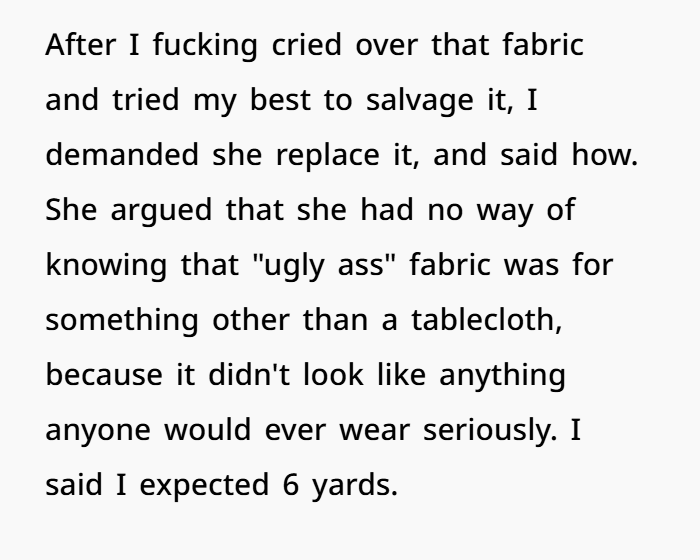
Advertisement – Continue Reading Below

Advertisement – Continue Reading Below
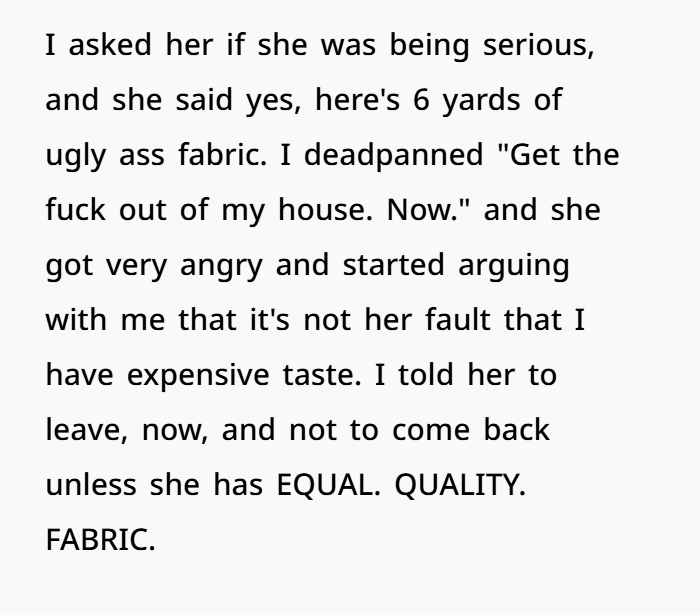
Advertisement – Continue Reading Below

Advertisement – Continue Reading Below
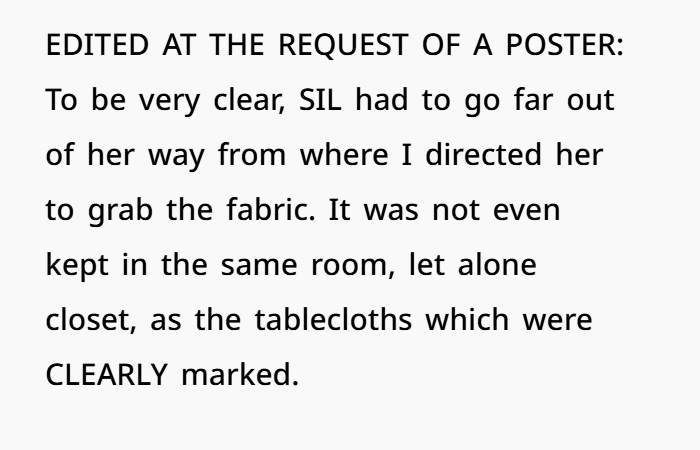
Advertisement – Continue Reading Below
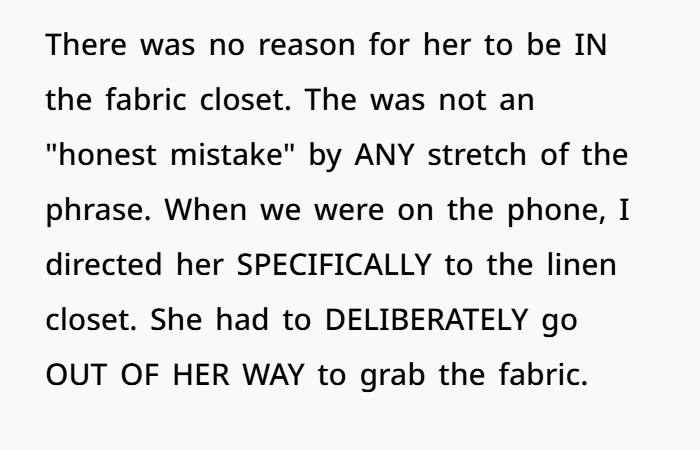
Advertisement – Continue Reading Below
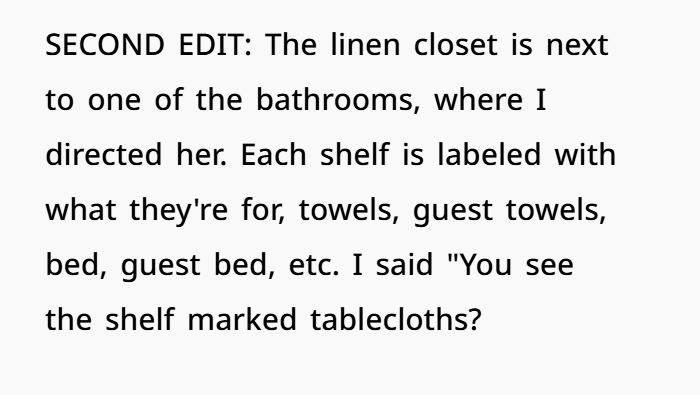
Advertisement – Continue Reading Below
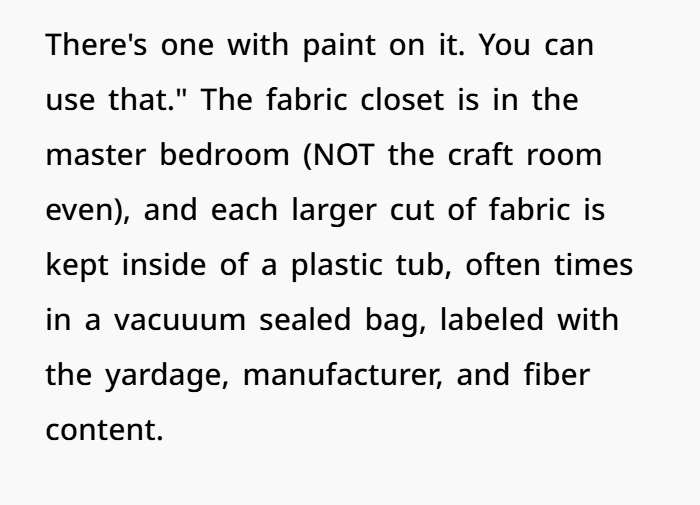
Advertisement – Continue Reading Below
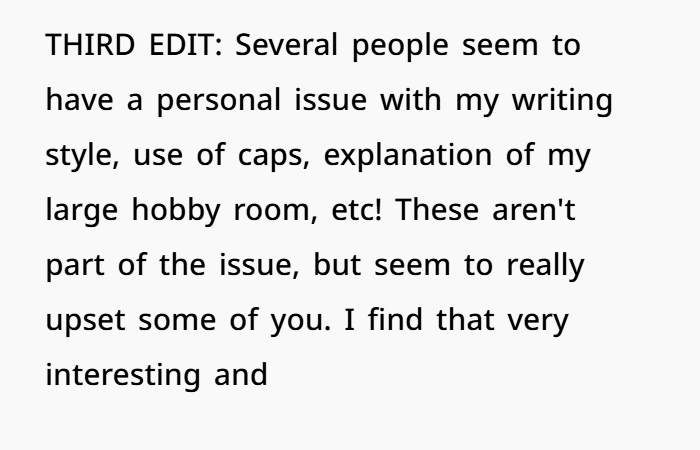
Advertisement – Continue Reading Below

Advertisement – Continue Reading Below
This post touches on several emotional and practical elements, primarily focusing on personal boundaries, the importance of material possessions, and family dynamics. The situation involves a high level of emotional investment from the user, not only because of the destruction of their fabric but also due to the apparent disregard for their clear instructions. This issue highlights the intersection of family relationships and individual boundaries, especially when a valuable personal item is damaged by someone else’s carelessness or lack of respect for the owner’s wishes.

Advertisement – Continue Reading Below
The Emotional Investment in Personal Possessions and Hobbies
For many people, hobbies are deeply tied to their sense of self-worth and identity. This is especially true for creative activities like sewing, where materials—such as fabric—can represent more than just a purchase; they can symbolize hard work, passion, and personal satisfaction. In this case, the fabric in question wasn’t just any material, but a special piece that the user had sourced carefully and intentionally, making it an emotionally significant possession. The user’s emotional response to the fabric being ruined is valid, as the destruction of something they had worked hard to acquire and value deeply likely felt like a personal violation.
Furthermore, this incident highlights the difference between sentimental value and material value. While the SIL may not understand why the fabric was important, it’s clear that for the user, the fabric held a personal significance. In situations like this, others may not fully grasp the intensity of the attachment unless they share a similar passion or hobby, which can lead to misunderstandings about the magnitude of the offense.
Setting Boundaries: The Importance of Communication in Family Relationships
Another crucial aspect of this situation is the issue of boundaries. The user clearly communicated where the tablecloths were located and directed their SIL to a specific area of the house. The fact that the SIL went out of her way to access a completely different closet, despite being told otherwise, suggests a lack of respect for the user’s boundaries and an assumption that her needs superseded the user’s. This is a significant breach of trust, as it’s not just about fabric but about disregarding someone’s instructions in their own home.
When personal boundaries are violated, especially in family settings, it can cause emotional distress, which is evident in the user’s response. The SIL’s actions appear to have been careless, either due to a lack of consideration or misunderstanding, but the user’s demand for replacement fabric was not out of line given the circumstances. As Dr. John Gottman, a renowned relationship expert, points out, respect for boundaries is foundational in any relationship, whether familial or romantic. The violation of these boundaries, especially when it comes to possessions or personal space, often leads to deeper feelings of resentment and frustration.
The Value of Material Objects in Family Conflict
In many family dynamics, the value of material possessions can be a point of contention. Some may view a damaged or lost item as something easily replaceable, while others may see it as an irreplaceable part of their personal collection. In this case, the SIL’s response of offering a much cheaper fabric demonstrates a clear misunderstanding of the value placed on the original fabric. The fact that the user requested a replacement of equal quality further reinforces the idea that the original fabric wasn’t just about its monetary cost but about its rarity, quality, and the user’s attachment to it. The SIL’s dismissive attitude toward the fabric’s importance only exacerbates the situation, making the user feel further invalidated.
Advertisement – Continue Reading Below

Advertisement – Continue Reading Below
This kind of material conflict can also trigger deeper feelings of being misunderstood or unappreciated. The user’s frustration likely stems not only from the fabric’s destruction but also from the SIL’s dismissive attitude, implying that the user’s belongings don’t hold the same weight of importance. In many cases, these material conflicts can serve as a proxy for deeper emotional issues, such as a lack of respect or empathy in the relationship.
Family Dynamics: Handling Conflict with Relatives
Family conflict often involves a complex interplay of emotions, where the sense of entitlement or disregard for personal belongings is especially painful when it comes from someone close. In this case, the SIL’s disregard for the fabric and her lack of understanding of its importance shows a lack of respect for the user’s personal space and items. The emotional outburst and refusal to accept the replacement fabric is understandable, considering the sense of betrayal that comes from someone you trust not taking your instructions seriously.
The user’s demand for an equal replacement fabric might seem extreme to some, but in the context of the emotional attachment and violation of boundaries, it seems like a reasonable request. It also sends a clear message about the importance of respecting personal property and boundaries within family relationships. A lack of acknowledgment or respect for these values can lead to larger issues down the line.
The author was referred to as “evil” and “awful”, but netizens didn’t agree—although some of them pointed out that she did seem exhausting
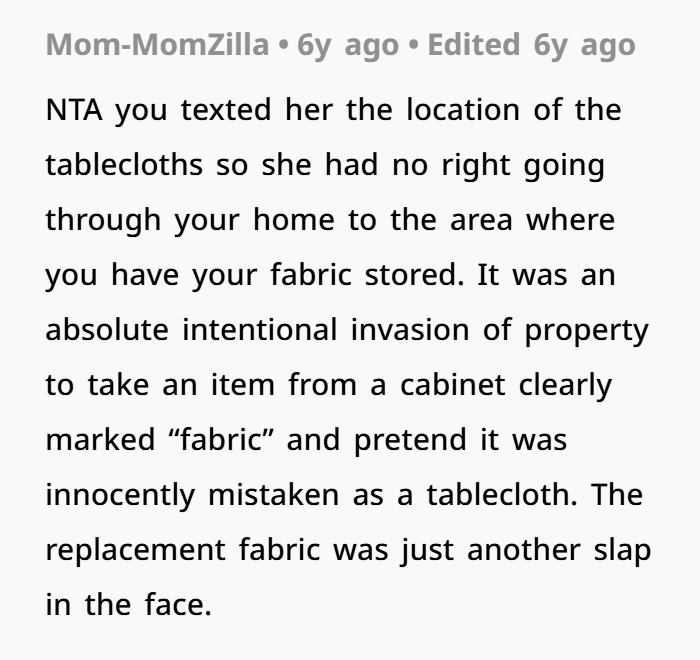
Advertisement – Continue Reading Below

Advertisement – Continue Reading Below

Advertisement – Continue Reading Below

Advertisement – Continue Reading Below
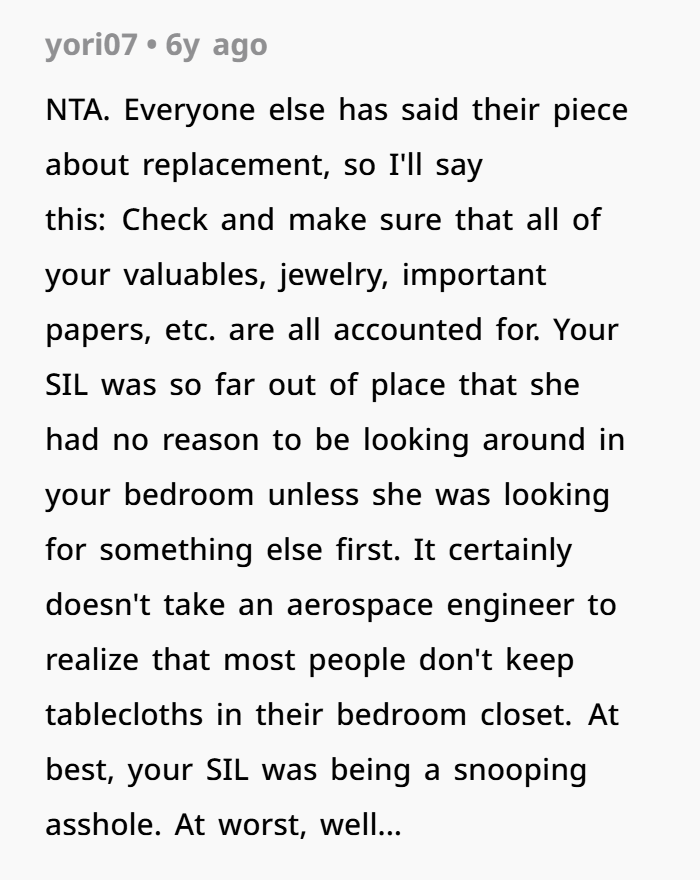
Advertisement – Continue Reading Below
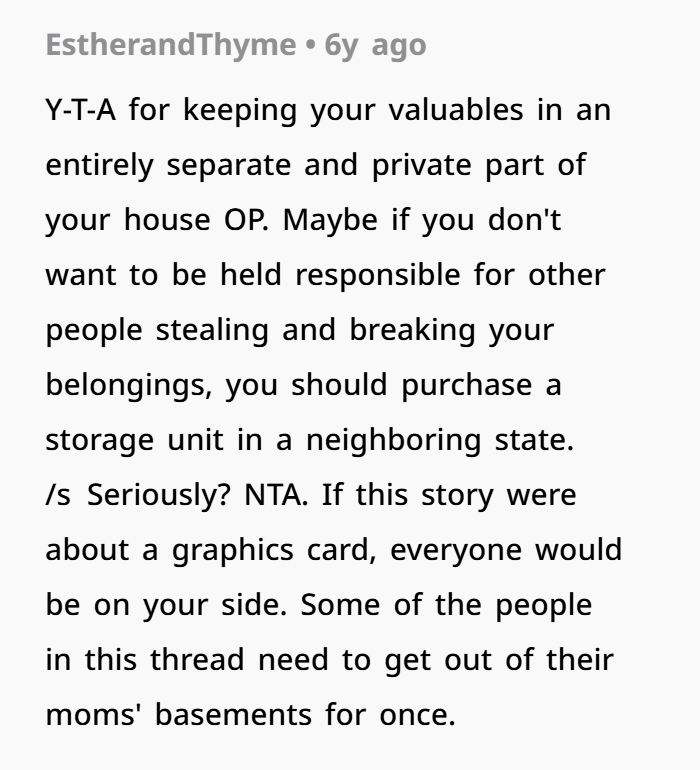
Advertisement – Continue Reading Below
While the emotional intensity of the situation may have led to some overreaction, the user’s demand for equal-quality fabric in replacement of the damaged one is entirely justified. This conflict centers not just on the value of material goods but on the deeper issue of respect, communication, and boundaries within family dynamics. The SIL’s actions, whether intentional or accidental, were careless and dismissive, and the user’s response reflects a need to assert boundaries in a relationship where those boundaries have been repeatedly violated. While it’s understandable that others may not fully grasp the emotional weight of the situation, the user’s stance is not unreasonable, given the circumstances.






